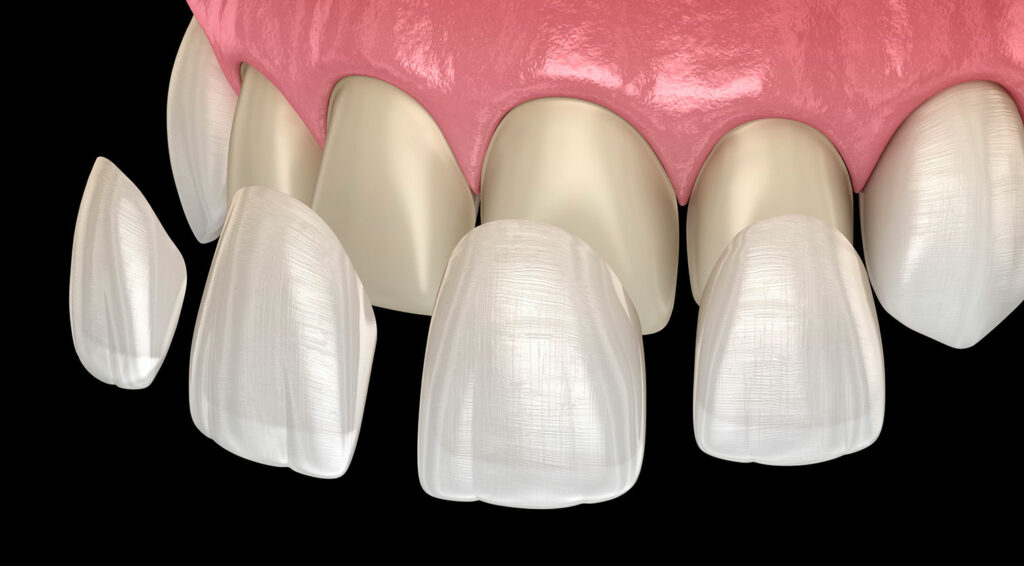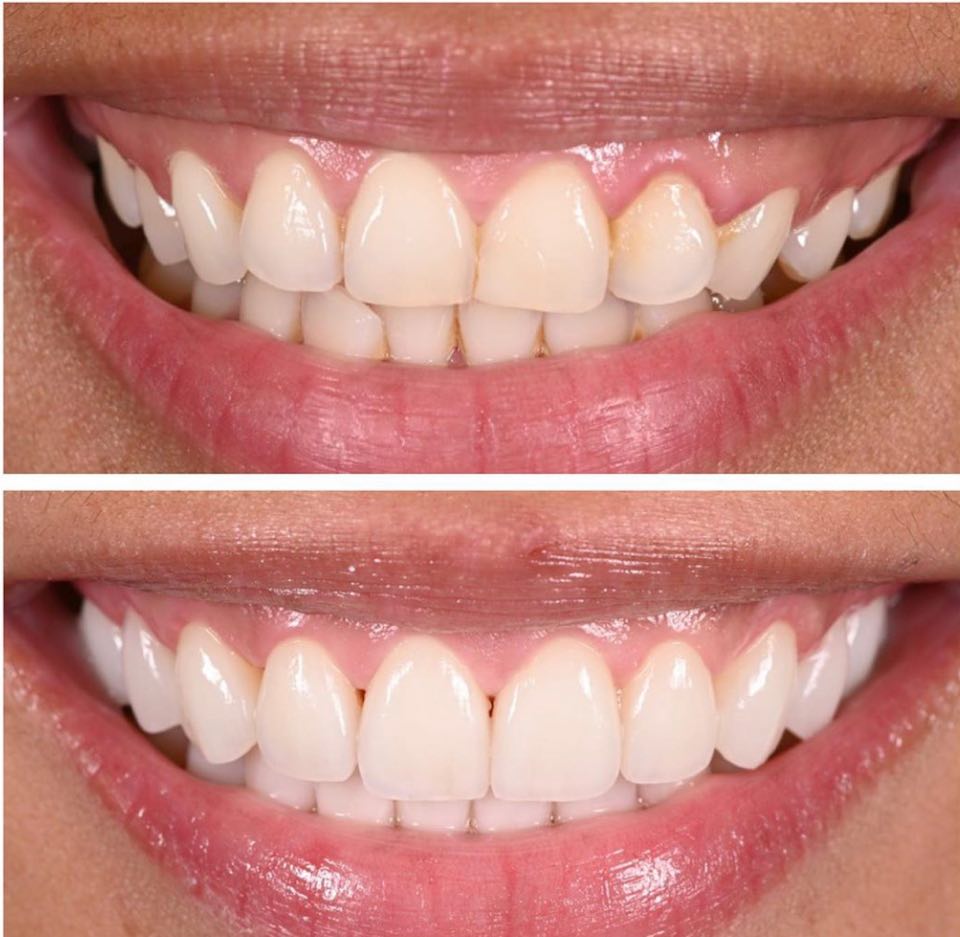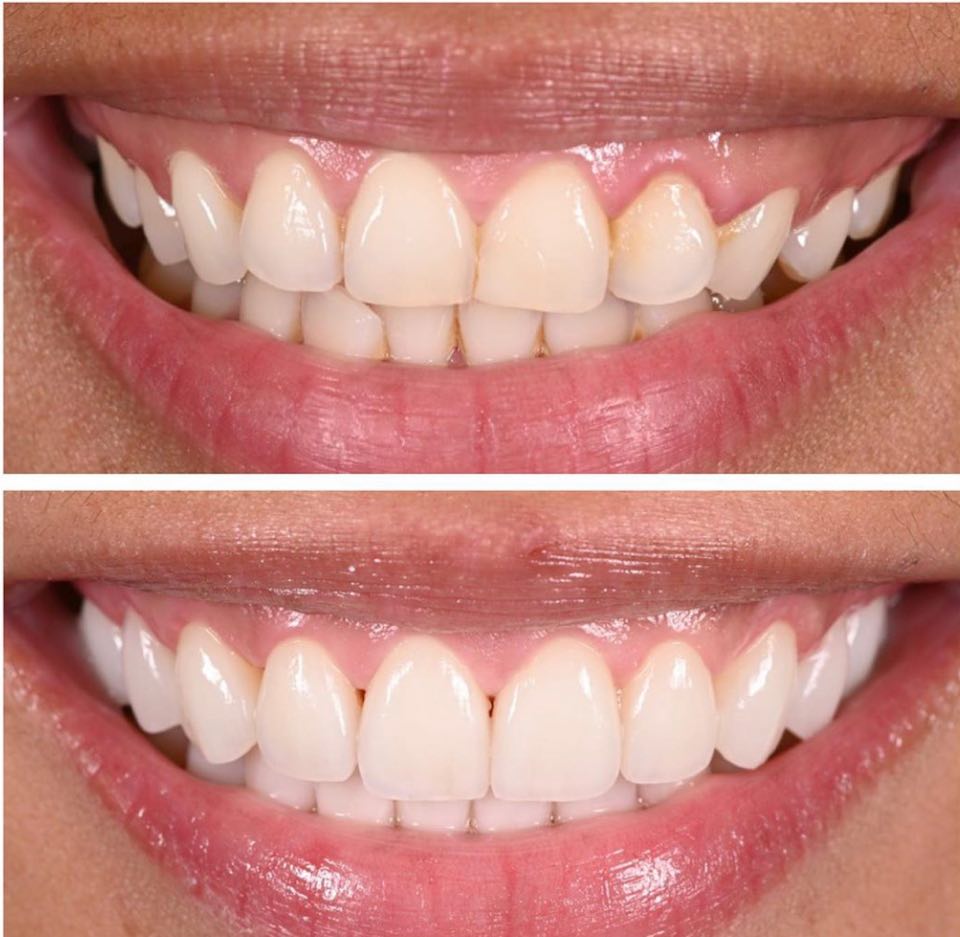Dental Prosthesis
Dentures can be fixed or removable. Their purpose is to reconstitute, strengthen or complete a tooth following a carious disease or fracture. Some dentures can replace a tooth.
Dental bridge
Dental veneers are very thin ceramic films, made by a dental technician on the basis of objective elements determined by the dentist and the patient during a preliminary esthetic analysis of the smile.

The esthetic and natural look of a veneer will depend on the surface condition of the veneer, its proportion to the position of the tooth and the patient’s face, its shade, and brightness.
The veneer has the advantage of having a greater luminosity than a tooth (whose core is made of an opaque material called “dentin”), which gives a different brightness to the smile, and rejuvenates it.
When the placement of veneers is considered in the realization of a new smile, the harmony of the smile is most often obtained by the placement of 6 or 8 or 10 veneers.
Thus, it is possible to balance the proportions of the smile and to obtain an esthetic symmetry.
The fact of making 8 or 10 veneers will make it possible to widen the smile to the premolars. This way, more teeth are visible in the smile, which will look fuller and more radiant.
The average life span of a veneer is 10 to 20 years.
In some cases, the gums must be reshaped with a laser (gingivectomy) in order to obtain an alignment of the base of the teeth offering a better balance to the smile and a better harmony between teeth, gums, and smile.
How is the veneer placement done?
Three sessions are required:
1/ Esthetic analysis of the smile and elaboration of a treatment plan (number and type of veneers) according to the patient’s expectations (The session lasts 30 minutes)
2/ Fine preparation of the teeth, impression of the teeth, and realization of temporary veneers (on the basis of the mock-up) (The session lasts 1h to 1H30)
3/Bonding of the facets on the teeth (The session lasts 1h to 1h30)
The result is obtained in two weeks maximum.



